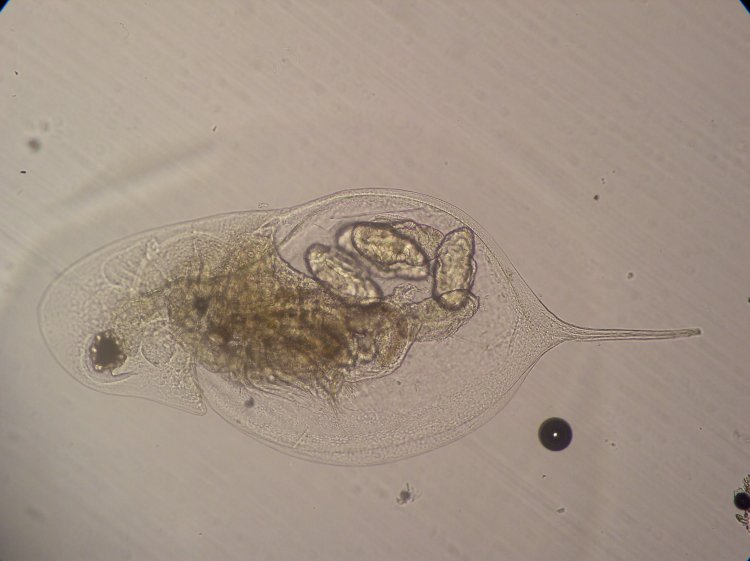
Russian scientists have discovered a new species of daphnia in mountain lakes and swamps on the Japanese island of Honshu. This species, which is found nowhere except in the mountains of Japan, has unique external features: its body combines whole “parts” of two species that interbred millions of years ago. The data clarifies the evolutionary history of the group and allows more accurate identification of species of great interest to fisheries. The results of the study, supported by a grant from the Russian Science Foundation (RSF), were published in PeerJ.
In order to use the resources of water bodies most efficiently, for example, for the purposes of fisheries, it is necessary to understand how their biodiversity is formed. These processes are usually studied in model organisms, whose genomes, genetic ties and histories are well researched and understood.
The crustaceans of the Daphnia longispina species group are widespread microscopic animals found throughout the Holarctic, a zone that occupies most of the northern hemisphere. Although much is known about them (particularly because they are actively used in aquaculture as fish food), scientists discover new species belonging to this group with enviable regularity. Such finds are most frequent in mountain reservoirs and other relatively hard-to-reach places.
Employee of the A.N. Severtsov Institute of Ecology and Evolution of Russian Academy of Sciences (Moscow), together with a colleague from the University at Buffalo (USA), studied zooplankton samples from Japanese high-mountain water bodies located on the island of Honshu, received from Japanese colleagues. The country is rich in endemics - species found only in a particular place, so finding another endemic species in a given region is the rule rather than the exception. This is what happened in this study - scientists discovered a new species, which was named Daphnia japonica in honor of Japan. The authors analyzed the hereditary material, as well as the appearance of the animals, in order to understand the position of this species in the Daphnia genus system.
Having deciphered the DNA sequences, the authors compared them with the existing data for already known crustaceans. It was confirmed that the discovered individuals really belong to a new, previously unknown species, but at the same time there are “traces” of other species in their genes: D. japonica appeared as a result of crossing representatives of D. longispina and D. galeata in the distant past. Nothing like this has ever been known for Daphnia. Individuals also differ from other members of the genus in appearance, and they have features of both the D. galeata species group and the D. longispina group. They are a kind of Frankenstein, resulting from an experiment set by nature millions of years ago.
“We suggest that the patterns found in Daphnia can be applied to other groups of freshwater animals. In this work, we managed to look into the very distant past, since the genetic line that represents our new species was formed millions of years ago. Then we got a hybrid between individuals that now belong to different groups of species - longispina and galeata. Hybrids are still being formed, but they coexist with their "fathers" and "mothers". In the case of our species, there are no “fathers” and “mothers” left, they have long died out, ”says Alexei Kotov, Doctor of Biology, Professor of the Russian Academy of Sciences, Corresponding Member of the Russian Academy of Sciences, Chief Researcher at the A.N. Severtsov Institute of Ecology and Evolution RAS.
Information and photos provided by the press service of the Russian Science Foundation
Related materials:
Indicator: "A new type of crustaceans from the reservoirs of the mountains of Japan turned
out to be "Frankenstein""
Around the world: "Crustaceans from the mountain lakes of Japan turned out to be
"Frankensteins". How did they surprise scientists?"
News portal NEWSTES: "A new species of daphnia from the mountain lakes of Japan arose
as a result of ancient interspecific hybridization"
